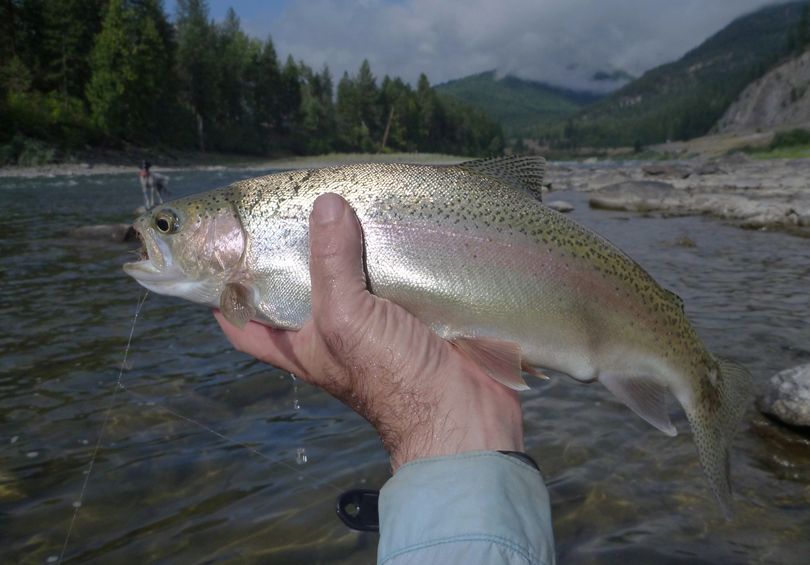Clark Fork River fish safer to release than to eat

FISHING -- Catch and release trout fishing on Montana's Clark Fork River -- widely practiced by fly fishers -- isn't just good for the fishery; it's good for your health, too.
While environmental groups are going to court charging that Washignton understates the contamination hazard in fish consumption warnings, here's a fish consumption advisory just issued by three Montana agencies:
Three state agencies today issued fish consumption advisories for northern pike and rainbow trout on a 105-mile stretch of the Clark Fork River in western Montana.
A "do not eat" advisory was issued for northern pike, and a "four meal per month" limit for rainbow trout, from the Clark Fork's confluence with the Bitterroot River, near Missoula, to the confluence with the Flathead River, near Paradise.
The advisories were issued by the Montana departments of Fish, Wildlife & Parks, Environmental Quality and Public Health and Human Services in response to contaminant investigations in fish immediately downstream of the Smurfit Stone Container mill site in Frenchtown.
Research this summer by FWP turned up dioxins, furans, and polychlorinated biphenyls, or PCBs-contaminants commonly associated with the pulp and paper mill industry-in northern pike and rainbow trout taken from the river.
Other species of fish from the Clark Fork River haven't been studied at this time.
At very high levels of exposure, these contaminants have been linked to adverse human health effects in immune and nervous systems and may be associated with birth defects. Dioxin and PCBs are classified as definite and probable human carcinogens, respectively, at high and prolonged levels of exposure. Fish consumption advisories are designed to keep exposures well below these high levels. The actual health risks to anyone who has been eating fish in this area is very low, state health officials said.
Northern pike had potentially dangerous levels of the three chemicals. Rainbow trout had lower levels of the same contaminants. Levels are higher in northern pike because they live longer, grow larger, and eat other fish.
Fish consumption advisories are conservative and designed to protect the most sensitive members of the population over a lifetime. In addition, the risks are based on the amount of toxins found in a raw fillet. Using normal cooking practices, and keeping only smaller fish, can reduce exposure risks.
When properly prepared, fish provide a diet high in protein and low in saturated fats and may be helpful in preventing heart disease. These preparation guidelines can optimize health benefits:
- Fillet the fish
- Remove the skin
- Cut away dark fatty tissue from the back and belly of the fish where harmful chemicals tend to accumulate
- Bake or broil the trimmed fish on a rack or grill it so the remaining fat drips away
For more information about the human health effects of eating fish, contact the DPHHS at 406-444-6988.
For information about fish advisories on the Clark Fork River and throughout Montana, contact FWP at 406-444-5686, or visit FWP's website at fwp.mt.gov. Click "Fishing," then click "Fish Consumption."
For information on the status of the Smurfit Stone Container site, contact DEQ at 406-841-5039 or visit the U.S. Environmental Protection Agency website at http://www2.epa.gov/region8/smurfit-stone-mill.
